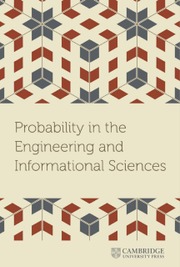Article contents
Gerber-Shiu analysis in the compound Poisson model with constant inter-observation times
Published online by Cambridge University Press: 06 June 2022
Abstract
In this paper, the classical compound Poisson model under periodic observation is studied. Different from the random observation assumption widely used in the literature, we suppose that the inter-observation time is a constant. In this model, both the finite-time and infinite-time Gerber-Shiu functions are studied via the Laguerre series expansion method. We show that the expansion coefficients can be recursively determined and also analyze the approximation errors in detail. Numerical results for several claim size density functions are given to demonstrate effectiveness of our method, and the effect of some parameters is also studied.
- Type
- Research Article
- Information
- Copyright
- © The Author(s), 2022. Published by Cambridge University Press
References
- 3
- Cited by


